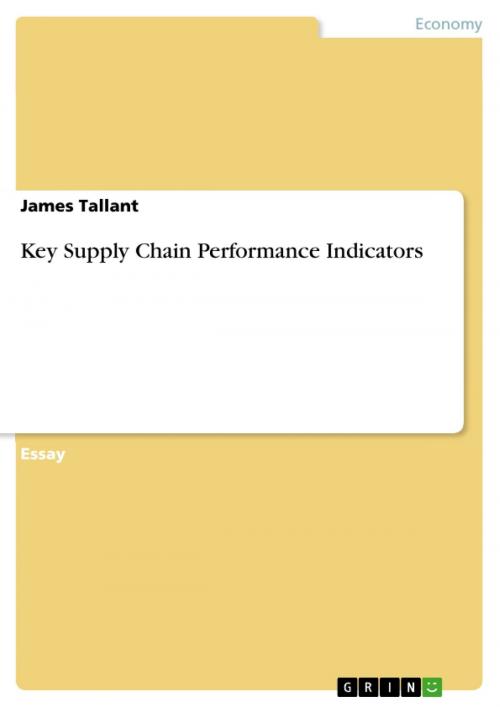Key Supply Chain Performance Indicators
Business & Finance, Management & Leadership, Production & Operations Management| Author: | James Tallant | ISBN: | 9783640838141 |
| Publisher: | GRIN Publishing | Publication: | February 21, 2011 |
| Imprint: | GRIN Publishing | Language: | English |
| Author: | James Tallant |
| ISBN: | 9783640838141 |
| Publisher: | GRIN Publishing |
| Publication: | February 21, 2011 |
| Imprint: | GRIN Publishing |
| Language: | English |
Essay from the year 2010 in the subject Business economics - Supply, Production, Logistics, grade: 94.00, University of Phoenix, course: ISCOM 370 Strategic Supply Chain Management, language: English, abstract: Key Supply Chain Performance Indicator Paper Supply chain management through the use of key performance indicators (KPI's) offers organizations improved profit margins and lower costs. Saxena (2009) comments 'KPI initials could stand for 'keep players informed' because the right set of key performance indicators can go a long way toward making sure companies and their third party logistics are truly on the same page' (p. 22, para. 3). Measuring key performance indicators in a quantifiable manner is used to evaluate, measure, and compare different organizations in a similar manner for matches in strategic and operational goals. As illustrated below in the hierarchy of supply chain metrics, Miles (2010), a supply chain's health is measured by foundation blocks or key performance indicators. Failure to identify, measure, or assess, diagnose, and correct through the use of key performance indicators such as on-time delivery, inventory turns, and inventory carry costs prevent the supply chain from reaching its full potential.
Essay from the year 2010 in the subject Business economics - Supply, Production, Logistics, grade: 94.00, University of Phoenix, course: ISCOM 370 Strategic Supply Chain Management, language: English, abstract: Key Supply Chain Performance Indicator Paper Supply chain management through the use of key performance indicators (KPI's) offers organizations improved profit margins and lower costs. Saxena (2009) comments 'KPI initials could stand for 'keep players informed' because the right set of key performance indicators can go a long way toward making sure companies and their third party logistics are truly on the same page' (p. 22, para. 3). Measuring key performance indicators in a quantifiable manner is used to evaluate, measure, and compare different organizations in a similar manner for matches in strategic and operational goals. As illustrated below in the hierarchy of supply chain metrics, Miles (2010), a supply chain's health is measured by foundation blocks or key performance indicators. Failure to identify, measure, or assess, diagnose, and correct through the use of key performance indicators such as on-time delivery, inventory turns, and inventory carry costs prevent the supply chain from reaching its full potential.















